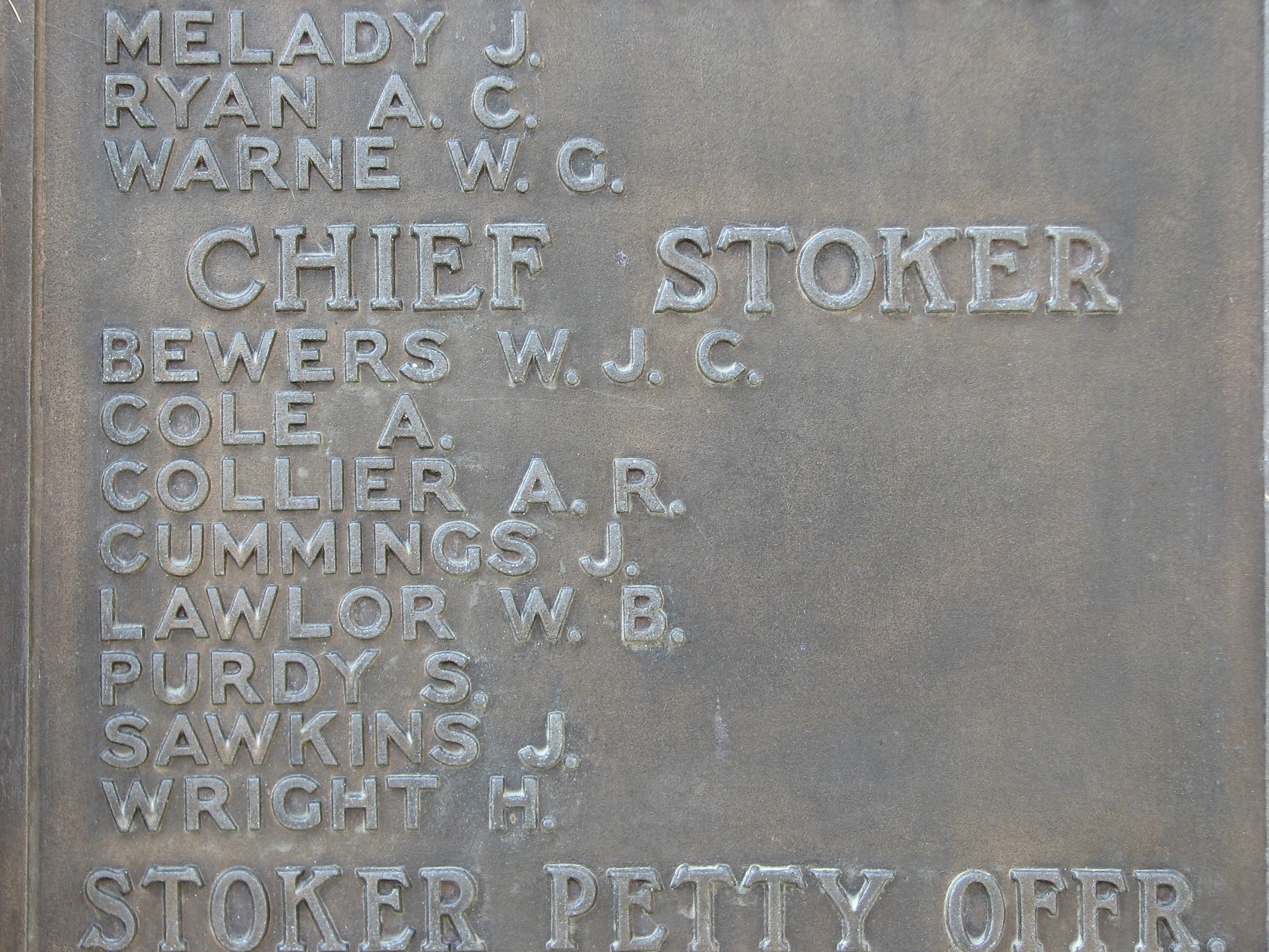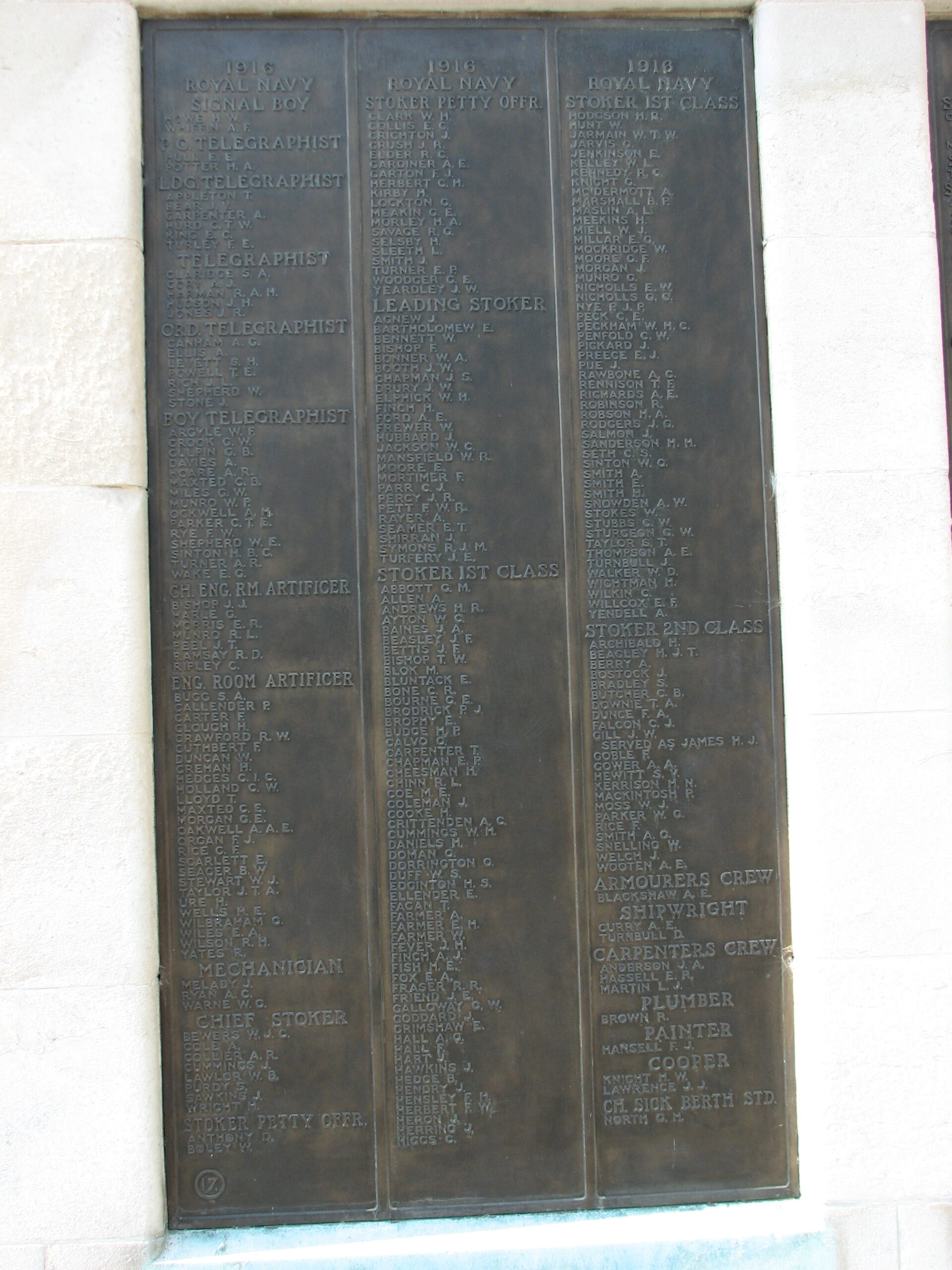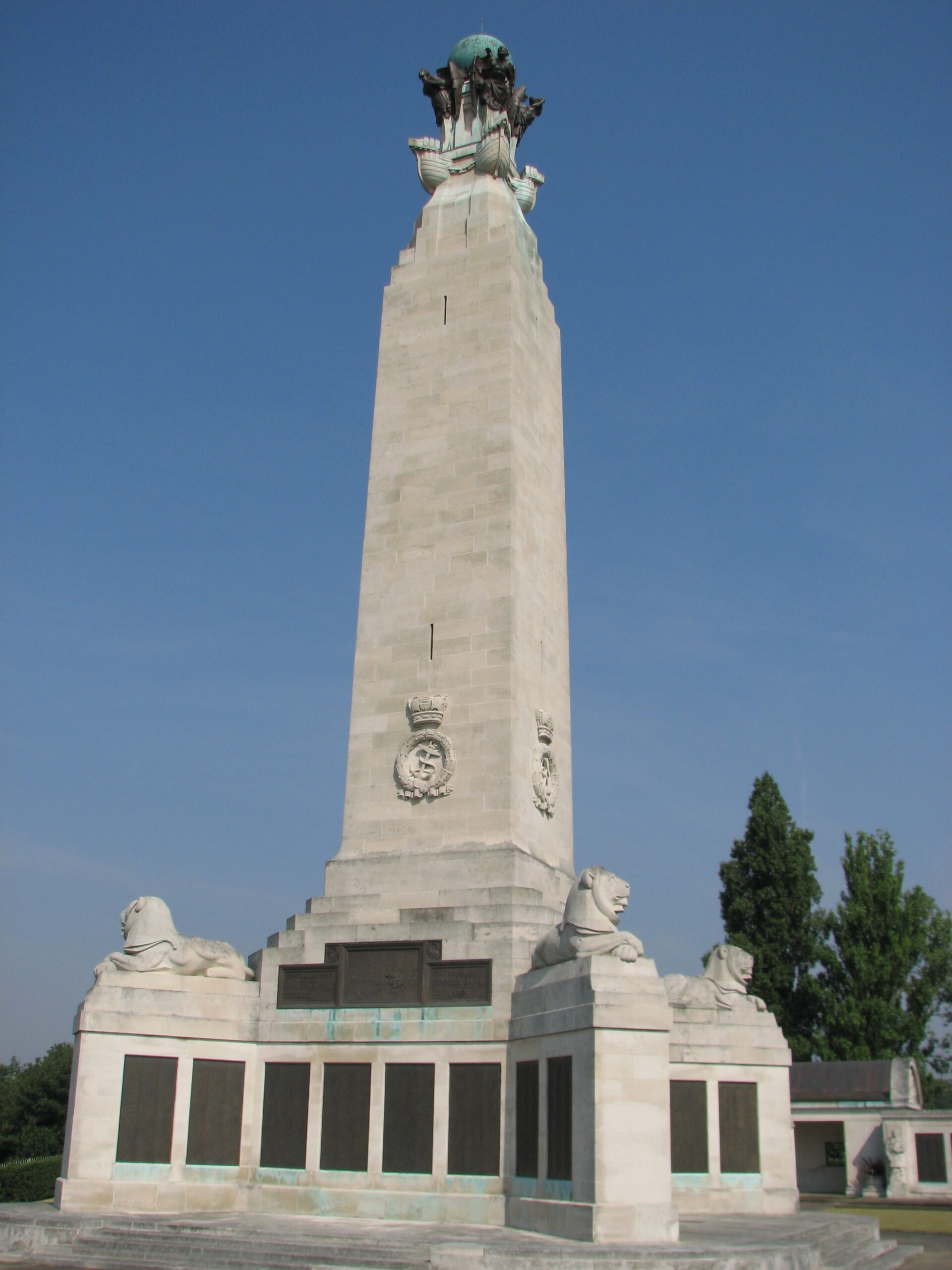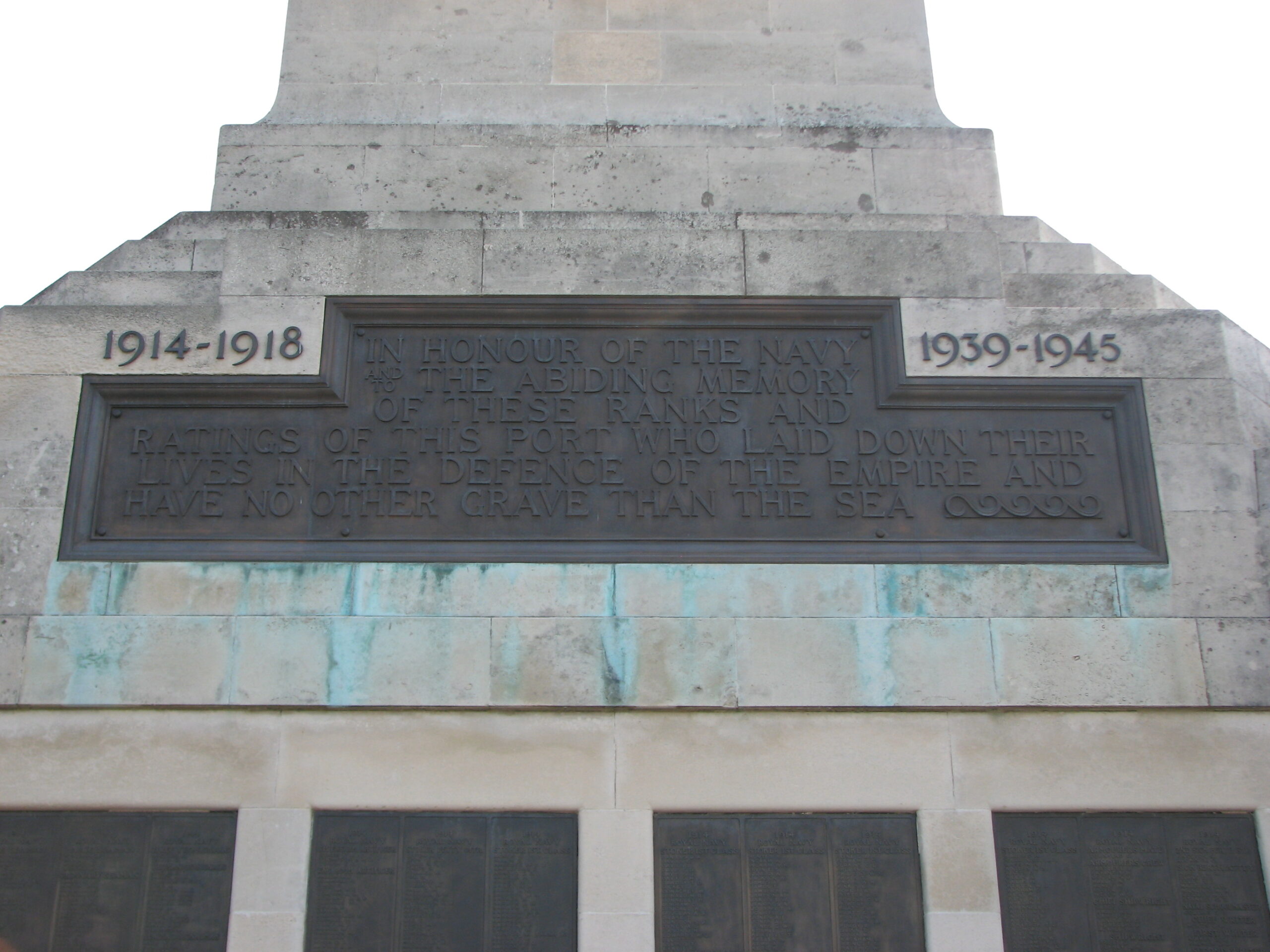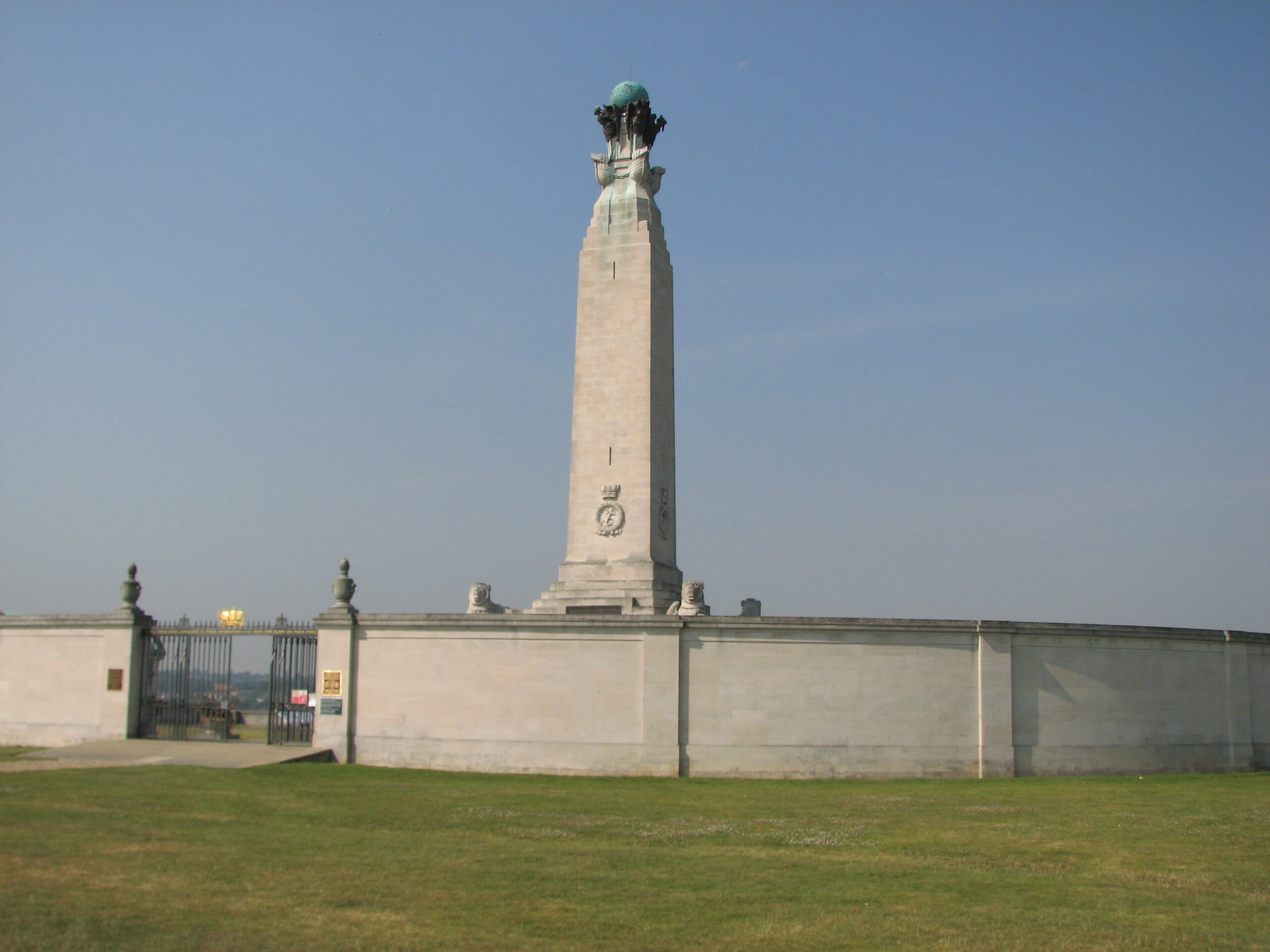Arthur Cole (1875 - 1916)
Arthur joined the Royal Navy at the age of 18 and for his service before 1914 had been awarded the Naval Long Service and Good Conduct Medal and also a campaign medal. He was killed in 1916, during the Battle of Jutland, leaving a wife and young son.
- 24
- Died in the Great War
- 51.968354, 1.03104
Details
| Name: | Arthur Cole |
| Service: | Royal Navy |
| Ship: | H.M.S. Turbulent |
| Service Number: | 276124 |
| Rank: | Chief Stoker |
| Date of Death: | 1st June 1916 |
| Age: | 40 |
| Commemorated: | Panel 17, Chatham Naval Memorial, Chatham, Kent |
Family Background and Early Life
Arthur Cole was born in Capel St. Mary on 21st December 1875, one of at least 11 children from the marriage of John and Sarah Ann Cole (nee Richardson).
At the time of Arthur’s birth, John Cole’s occupation was a Steam Engine Driver (a Driver at this time meaning operator).
Both of Arthur’s parents had been born in Capel St. Mary, and Arthur started as a pupil at the village school there in March 1880. When Arthur was 8, the family moved to East Bergholt, where they lived on Manningtree Road. Arthur continued his education at the village school at Burnt Oak. Tragedy struck in the summer of 1888, when Arthur’s mother died in the summer of 1888, aged 40.
John Cole moved from East Bergholt to Tattingstone sometime between 1891 and 1901, quite possibly in late 1894 when he married Charlotte Rose. The 1901 Census shows that as well as being a Threshing Machine Proprietor, he was also the publican of the White Horse in Tattingstone. This being an age when being a publican was not a full-time occupation.
Start of Naval Career
After leaving School, Arthur became a General Labourer and later a Factory Hand. At the start of February 1894, 18 year old Arthur signed up for a 12 year enlistment in the Royal Navy. His Service Record describes him at this time as being 5 foot 4 ½ inches tall, with brown hair, blue eyes and a fair complexion. 1 In February 1906, Arthur’s height was recorded as being 5 foot 7 and ¾ inches.
Arthur’s trade in the Navy was that of a Stoker. Stokers essentially were the men who powered the ships of that time, moving the coal to the ship’s boilers and then shovelling it in. It was a filthy and arduous task, but without them the ship had no power.
After his initial enlistment period was up, Arthur elected to remain in the Navy. He had risen through the ranks – starting as a Stoker (2nd Class), by January 1908 he was promoted to Chief Stoker, having been acting in that rank for the last year.
The rank of Chief Stoker essentially meant that Arthur was in charge of the Stokers, and responsible for their welfare, discipline and organisation.
Benin Expedition and After
Most of the ships that Arthur served in were cruisers. Whilst serving in HMS Barrosa in 1897, he took part in the Benin Expedition. This was a colonial expedition drawn up to punish the Kingdom of Benin (in what is now Nigeria), following the killing there of the Acting Consul-General, and almost all of his men.
The invasion force which was under the command of Rear-Admiral Rawson was made up of approximately 1,200 Royal Marines, sailors and Niger Coast Protectorate Forces: They captured, burned and looted the capital, Benin City. For his service Arthur here was subsequently awarded a campaign medal, officially called the East and West Africa Medal with Benin 1897 Clasp.
On 27th April 1904, Arthur married Kate Richardson at the Parish church in Capel St. Mary. Kate was the same age as Arthur, and a native of that village, so it is extremely likely that they had known each other since they were children.
Sixteen months later in East Bergholt, Kate gave birth to the couple’s only child, a son who they called Arthur Jack. It is possible that Arthur Jack was born at East End, as we know that John Cole and his second wife had moved there at some point between 1901 and 1911.
Whether Kate lived in East Bergholt is not documented, but we know that by April 1911 she and young Arthur were living on Bramford Road in Ipswich.
Early Wartime Service
Between August 1911 and November 1913, Arthur served at HMS Ganges, the Royal Navy training establishment based at Shotley. Two days after the outbreak of war on 4th August 1914, he was posted to the pre- dreadnought battleship HMS Triumph. At that time, she was stationed at Hong Kong.
In January 1915, Triumph was transferred to the Mediterranean, and there was involved in the ill-fated Gallipoli campaign against Germany’s ally, the Ottoman Empire (modern day Turkey). Triumph took part in the initial, unsuccessful attempts by the Royal navy to try force the Dardanelles Straights. In April, she helped to support the Allied Army landings on the adjacent Gallipoli Peninsula.
On 25th May, Triumph was bombarding Ottoman positions on the Peninsula when she was sunk by a torpedo fired from a German submarine. 78 men lost their lives, Arthur was one of the survivors.
After the sinking, Arthur returned to the UK. On 29th April 1916, he was posted to the destroyer HMS Turbulent, then nearing completion after having been launched at the start of the year. She was completed on 1 May, and rushed into service. 2 HMS Turbulent was a Talisman class destroyer. 309 feet in length, with a displacement of 1,098 tons, she had a top speed of 32 knots. Her armament consisted of five 4 inch guns, plus two 21 inch torpedo tubes. Her complement was 102 officers and men.
Turbulent was posted to the 10th Destroyer Flotilla which was part of the Harwich Force, based at that port. Whether Turbulent actually joined the Flotilla, or was immediately attached to the 13th Destroyer Flotilla based in Rosyth near Edinburgh, is not clear.
The Battle of Jutland
On 31st May 1916, Turbulent was part of the British Grand Fleet that set sail to take on the German High Seas Fleet in the North Sea at what became known as the Battle of Jutland.
Fought over 36 hours during 31st May and 1st June 1916, the Battle of Jutland was the largest naval battle of the Great War, and the only time the British Grand Fleet and the German High Seas Fleet met in combat. Though British losses were greater than those of the German High Seas Fleet, the Royal Navy retained command of the sea. 3 The Battle involved 250 ships and around 100,000 men. The Royal Navy lost 14 ships, including three battlecruisers, and more than 6,000 men. The German fleet lost 11 ships and more than 2,500 men.
Following fighting between the battleships of the two fleets during the day of 31st May, the German Fleet tried to slip away. In the middle of the night several flotillas of British Destroyers tried to launch torpedo attacks against the Germans. These attacks were chaotic in nature, and often took place at very short range.
In the course of this part of the Battle, the British lost one cruiser and 5 destroyers, one of which was HMS Turbulent. The Germans lost the ageing battleship Pommern.
Turbulent was sunk by the German battleship SMS Westfalen, though exactly how is subject to some debate. Some accounts state that she was rammed, others that she was blasted out of the water at close range, and exploded.
HMS Turbulent sank with the loss of almost all of her crew. 4 Some sources say that Turbulent was lost with all hands, others that 96 died and there were 13 survivors. Arthur, who would have been deep in the bowels of the ship, stood little chance. He was 40 years old.
Arthur has no known grave, and is commemorated on the Chatham Naval Memorial in Kent. 5 I After the war it was decided that an appropriate way to commemorate those members of the Royal Navy who had no known grave, would be to erect identical memorials in the form of an obelisk in each of the three manning ports in Great Britain – Chatham, Plymouth and Portsmouth.
The name of each man with no known grave was inscribed on the memorial in their respective manning port. The Chatham Naval Memorial commemorates more than 8,500 naval personnel from the Great War, and over 10,000 from the Second World War.
Postscript
Kate Cole remarried in 1921 and stayed living in Suffolk until her death in 1954. It is believed that Arthur Jack Cole died in Suffolk in 1963.
Copyright © Mark Ashmore, 2024
- 24
- Died in the Great War
- 51.968354, 1.03104


